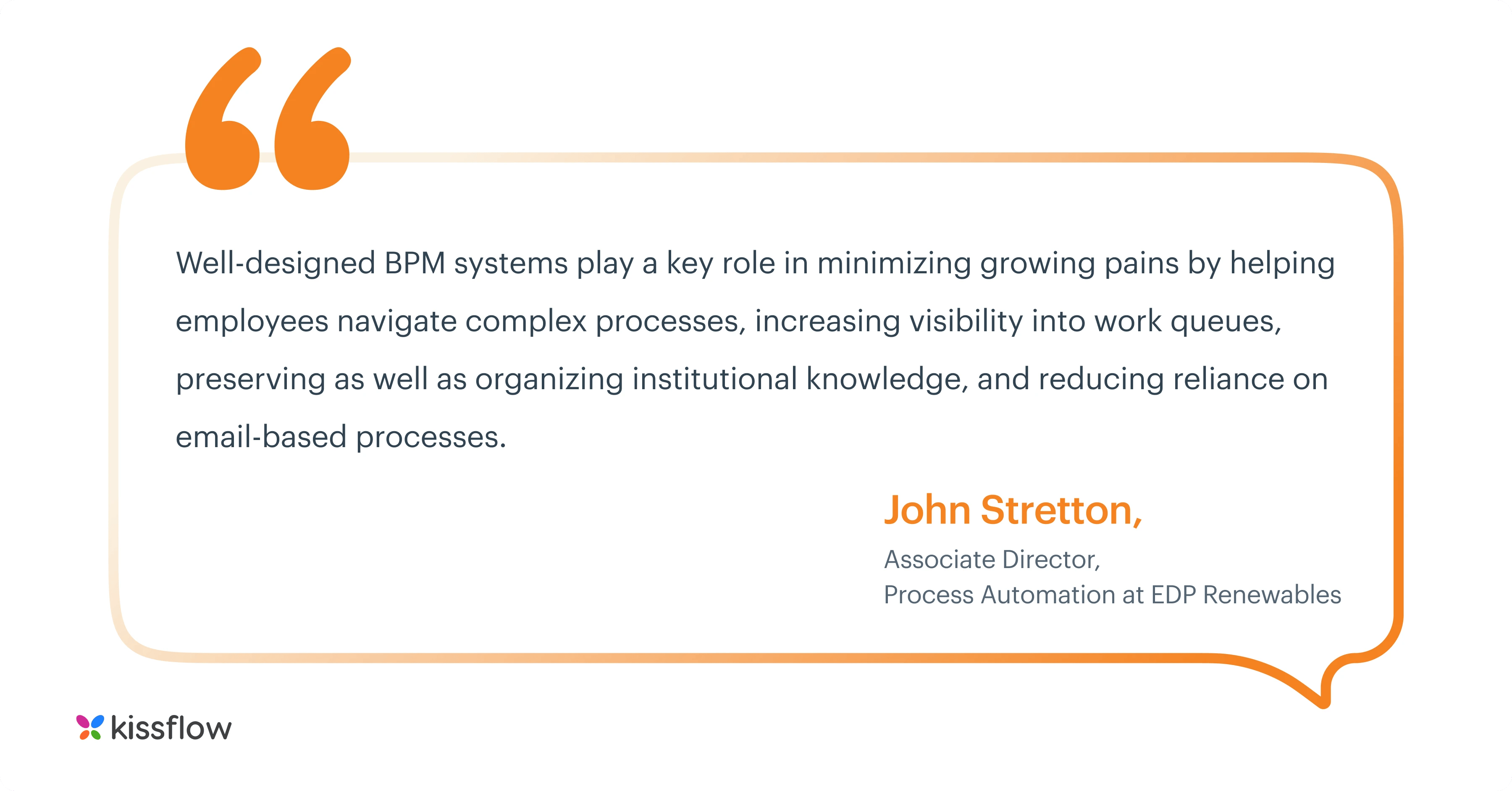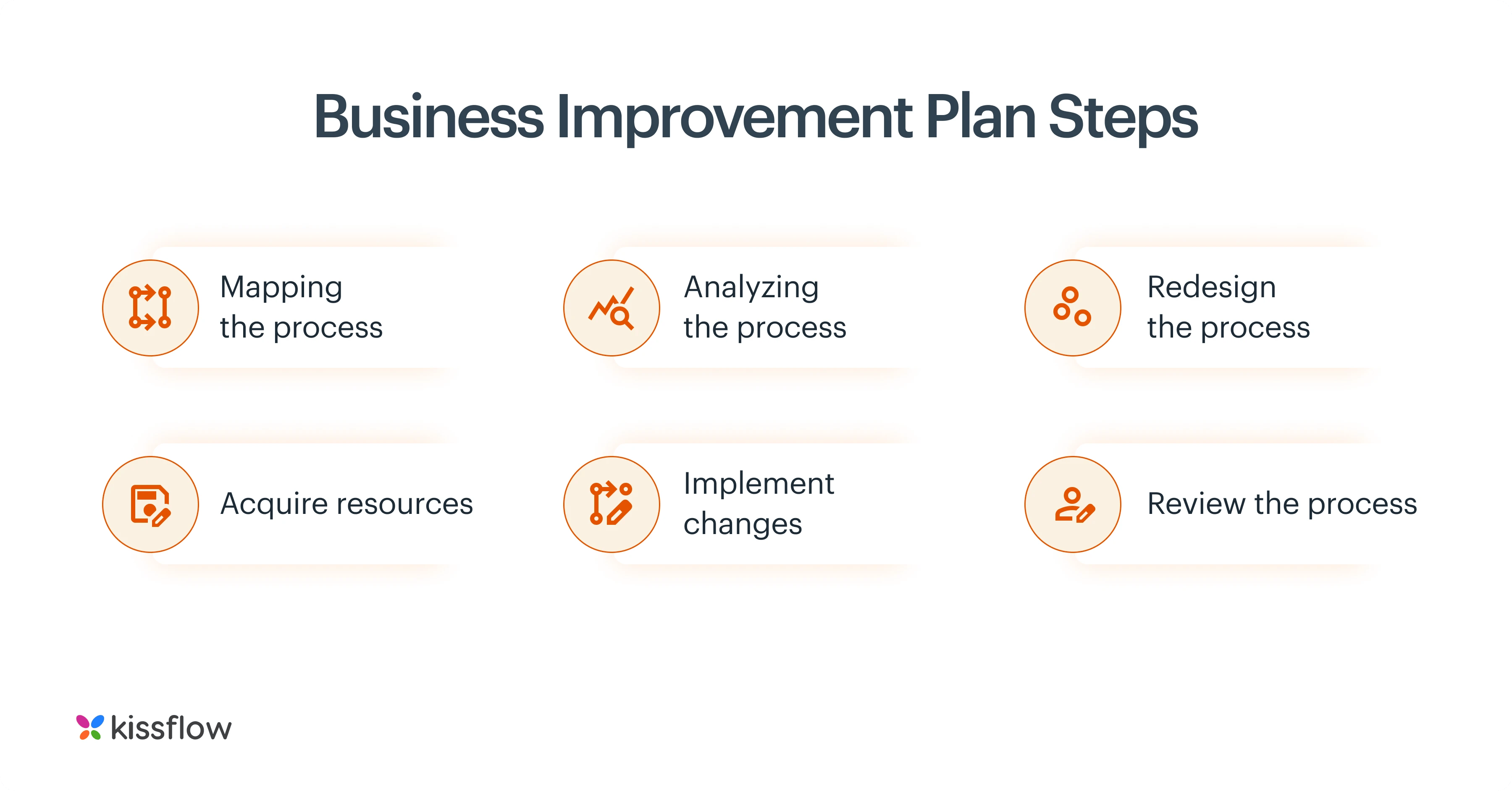Every enterprise depends on numerous business processes to run its operations successfully. But if these processes don’t run as expected, generate inconsistent results, or take too long to complete, then it can eventually lead to process breakdowns and inefficiencies.
By implementing a process improvement methodology plan, CIOs can identify existing business processes with bottlenecks or areas of improvement and improve those processes to increase operational efficiency.
What is a process improvement plan?
If process improvement is the what, a process improvement plan is the how.
As the name implies, a process improvement plan is a blueprint that details:
- How the project management team intends to measure the performance of their internal processes
- What factors exactly which are holding back the efficiency of their processes
- Where improvements can be made and to which processes, in order to drive better results
A process improvement plan is essentially a 360-degree outline that details what’s working with a team’s processes, what’s not working, and how they intend to fix them—keeping in mind the results they want to derive.
While process improvement is important for any organization seeking to achieve more with less resources, a process improvement plan serves as the strategy that guides it and makes it easy to succeed.

Process improvement example: Improving customer service in an e-commerce company
When an e-commerce company routinely receives a very high volume of customer inquiries, it can be challenging for the customer service team to keep track of every request coming their way and respond to inquiries promptly.
Process improvement strategy can involve streamlining the customer service process so that the most common customer inquiries get automatically answered by chatbots and the complex inquiries are redirected to the customer service team, leading to better response time and enhanced customer satisfaction.
What are the major steps involved in process improvements?
Just like a process is a collection of repeatable tasks and human interactions needed to achieve certain outcomes in an organization, process improvement is a process in itself.
It involves several steps which when carried out, help a team to identify which part of their processes are performing below par so they can update or eliminate them entirely.
Below are the 6 Business Improvement Plan Steps:

1. Mapping the process
Ideally, a process is a visual breakdown of how repeatable tasks and human interactions work together for achieving business targets.
As a result, when looking to improve existing processes, it always helps to visualize how they currently work, coexist, or cooperate to deliver outcomes.
Only when a process has been clearly broken down into its constituent tasks and sub-tasks can it be efficiently improved since now, the team can begin to look at each minute item with detail.
2. Analyzing the process
With the process broken into its constituent parts, the project team proceeds to analyze each part to uncover where exactly things are going wrong.
Here, the project management team can cut to the chase faster if they ask questions like:
-
- Where does work stagnate?
- At what point does resource waste increase above average?
- Where do we witness communications disconnect?
- What stage of this process fails to contribute to the outcome overall?
The process analysis stage offers the project management team an avenue to pinpoint problem areas in the process and as a result, it’s easier narrowing down and solving these problems faster.
3. Redesign the process
With a detailed outlook into the places where a process runs into hitches, the project management team can now begin adjusting their strategy and tweaking the process to adjust or eliminate those friction points in the process.
In order to achieve this end successfully, the project team should ask questions such as:
- What parts of this process can we trim down and still meet our goals?
- What can we add to this process to improve speed or output?
- What existing tasks in this process can we tweak to improve output, speed, or resource efficiency?
With these due diligence questions answered, the project management team moves on to tweaking the steps and action items in their process outline, eliminating what’s not working, and including steps that help to boost output.
This stage is carried out on the drawing board and helps the project management team visualize what their updated process will look like in operation so they can make any necessary changes before testing.
4. Acquire resources
With the process redesign on the drawing board, the project management team now has a new, improved outline for getting the process’s end goals achieved.
The next step is to acquire the resources necessary to implement the changes outlined in the updated process plan. These include:
- Personnel input from across the organization
- Technical support
- Increased budget
- Executive buy-in
The aim is to equip the project management team with the bpm tools and resources necessary for moving their updated process outline off the drawing board into reality.
5. Implement changes and communicate changes
At this point, the project management team swings into action executing their improved process in a real-life scenario.
The aim here is to take advantage of the changes made to the team’s process, as well as to make notes of any issues that may come up during this execution/testing phase.
Further, the team updates other departments or members of their organization whose work ties in with theirs so they can take note of the changes and adjust to the new strategy.
6. Review the process
With the changes to the process fully implemented and communicated to relevant stakeholders across the organization, the team can now get down to a retrospective level, asking questions such as:
- How much have the changes we implemented improved our process?
- Have the changes we implemented made any adverse effects on our outcomes overall?
- Are there any tweaks we can make before we get this process all set up for day-to-day operations?
With these questions, the project management team can point out and resolve any attendant issues that came up with their process update.
This leads to gradual improvement that helps the team achieve the ultimate aim of utilizing systems and processes—achieving targets on time and under budget.
All in all, the process improvement plan offers every forward-thinking organization a coherent, trustworthy blueprint for upgrading their processes so they can stay on the bleeding edge without sacrificing time or resource efficiency.
Implementing business process standardization streamlines operations by unifying procedures across your organization, ensuring consistent performance and reducing errors. This approach is key to driving efficiency and optimizing workflows.
Benefits of process improvement planning
A process improvement plan offers the groundwork for updating business processes so they can stay on the cutting edge, delivering goals easier and faster. Some of the other benefits of process improvement include:
1. Increased resource efficiency
One of the key functions of a process improvement plan is to identify parts of a process that require significantly more resources than it appears it should. With such insights at hand, the team can begin making efforts to implement necessary changes that enable them to achieve more with the resources they have available.
2. Productivity gains
When members of an organization who previously spent significant time working with inefficient processes get their work simplified, that extra time can be invested into doing work faster.
3. Process improvement coherence
One of the biggest issues with business process management is that there’s always a lot to do. And trial and error tends to make things progressively worse.
A process improvement plan, on the other hand, offers a dependable blueprint for reworking how the organization knows to deliver results so they can make necessary changes without jumping through several hoops.
How exactly does process improvement apply to your organization?
Business process improvement is everywhere.
Whether it’s the content manager trying to create a better blueprint for optimizing blog posts, or the accounts department working on an improved solution for handling invoices, process improvement applies anywhere there’s a need to use fewer resources, drive more results, or get work done in less time.
As a result, if your organization must stay on the cutting edge, you must embrace process improvement as an integral part of your BPM strategy.
Kissflow is a powerful low-code platform that can identify bottlenecks in your existing business processes and help you modify processes to improve efficiency. With Kissflow’s drag-and-drop form builder, you can quickly modify processes and review the changes before taking them live. Since Kissflow requires little to no coding to build complex processes, even business users can build processes from scratch on their own.















